The world of edible Boletus mushrooms offers a rich variety of flavors and textures that can elevate culinary experiences. Boletus Edulis is renowned for its robust taste, while Boletus Bicolor has a subtler, nutty profile. Other noteworthy species, like Boletus Luridus, Barrowsii, and Pinophilus, each bring unique characteristics that can enhance a range of dishes. As culinary trends evolve, grasping the nuances of these mushrooms becomes increasingly relevant. What implications do these diverse flavors have for contemporary cuisine? The answer may reshape how we approach our next meal.
Boletus Edulis
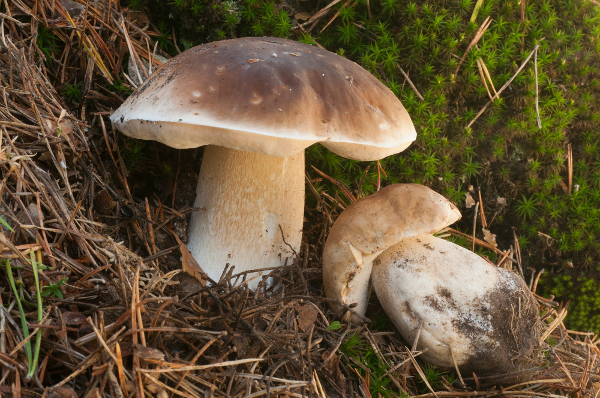
Boletus edulis, commonly known as the King Bolete or Penny Bun, is celebrated for its rich flavor and various nutritional benefits. This esteemed mushroom features a thick, meaty texture and earthy aroma, making it a staple in many culinary traditions, especially Italian cuisine.
Porcini mushrooms are an excellent source of dietary fiber, essential vitamins, and minerals. They are particularly high in B vitamins, including riboflavin, niacin, and pantothenic acid, which support energy metabolism and overall health. Additionally, Boletus edulis is abundant in antioxidants, such as ergothioneine, which may help reduce oxidative stress and lower the risk of chronic diseases.
The versatility of Boletus edulis allows it to be enjoyed fresh, dried, or as a powder, enhancing a wide array of dishes. For those who appreciate freedom in their culinary adventures, incorporating porcini mushrooms not only elevates flavor but also contributes to a balanced diet, emphasizing that food can be both delightful and nourishing.
In terms of identification, Boletus edulis is characterized by its brown cap, white to yellowish pores underneath, and a thick stem with a net-like pattern. However, it’s essential to be cautious, as look-alikes such as Boletus bicolor and other poisonous mushrooms can be mistaken for this prized species. Always consult a knowledgeable guide or expert when foraging for wild mushrooms.
Boletus Bicolor
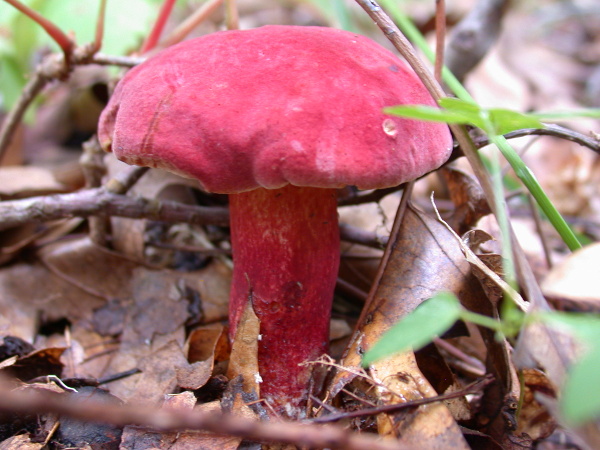
Boletus bicolor, known as the two-colored bolete, is a noteworthy member of the edible mushroom family, closely related to the more renowned Boletus edulis. Its vibrant yellow pores and reddish-brown cap make it easily identifiable and a favorite among foragers and culinary enthusiasts.
Boletus bicolor is appealing for several reasons:
- Flavor Profile: Offers a mild, nutty taste that enhances various dishes.
- Versatility: Ideal for grilling, sautéing, or incorporating into soups and stews.
- Nutritional Benefits: Packed with vitamins and minerals, promoting a healthy diet.
- Foraging Experience: Presents an exciting opportunity for mushroom hunters to explore diverse habitats.
- Culinary Tradition: Plays a role in various regional cuisines, sparking creativity in the kitchen.
Though it may not enjoy the same fame as its relatives, Boletus bicolor’s unique traits and delightful flavor make it a valuable addition to any mushroom lover’s collection. Embracing this mushroom opens new avenues for culinary exploration, allowing one to savor nature’s bounty in a delicious way.
Boletus Luridus
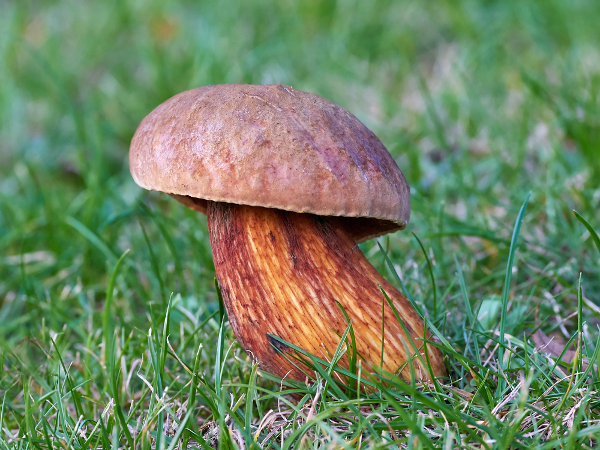
The Boletus luridus, also known as the lurid bolete, is a notable species in the boletus family, recognized for its striking reddish-brown cap and culinary potential. This mushroom can grow up to 15 cm in diameter, featuring a stem that is yellow to olive-green and swollen at the base.
In cooking, Boletus luridus is valued for its rich, earthy flavor, often recommended to be cooked for enhanced taste and texture. However, some may opt to consume it raw in small quantities, though caution is advised due to the possibility of mild gastrointestinal discomfort in some individuals.
Typically found in coniferous and mixed forests, Boletus luridus appears from late summer to early autumn, showcasing the intriguing diversity of edible fungi and enticing adventurous gourmets to explore its unique qualities in mushroom foraging.
Boletus Barrowsii
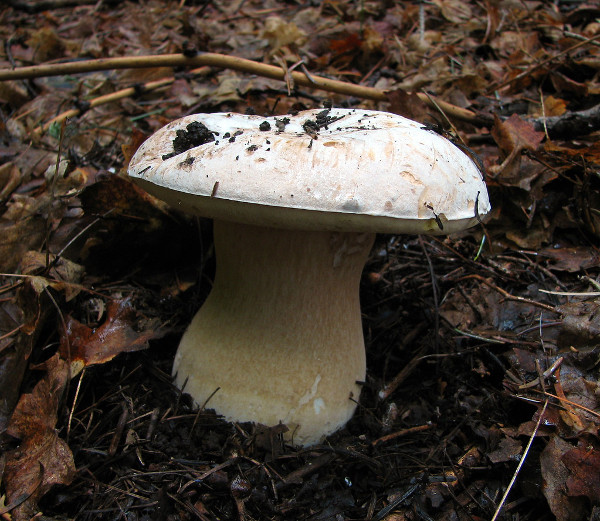
Boletus Barrowsii, commonly known as White King Bolete, is a fascinating mushroom favored by mycologists and culinary enthusiasts alike. Native to North America, it boasts a robust stature with a yellow-brown cap that can grow to impressive sizes. Its tender flesh offers a mild, nutty flavor, making it a prized ingredient in various dishes.
Key attributes of Barrow’s bolete include:
- Flavor Profile: Mild, nutty taste that enhances many recipes.
- Texture: Firm and tender, offering an enjoyable mouthfeel.
- Culinary Versatility: Ideal for sautéing, grilling, or incorporating into soups.
- Nutritional Value: Packed with important vitamins and minerals for a balanced diet.
- Foraging Adventure: Provides an exciting opportunity for mushroom harvesting enthusiasts.
When prepared correctly, Boletus barrowsii can elevate any meal, making it a celebrated choice among edible mushrooms. Its unique qualities and culinary potential encourage both experienced cooks and adventurous food lovers to explore its use in the kitchen.
Boletus Pinophilus
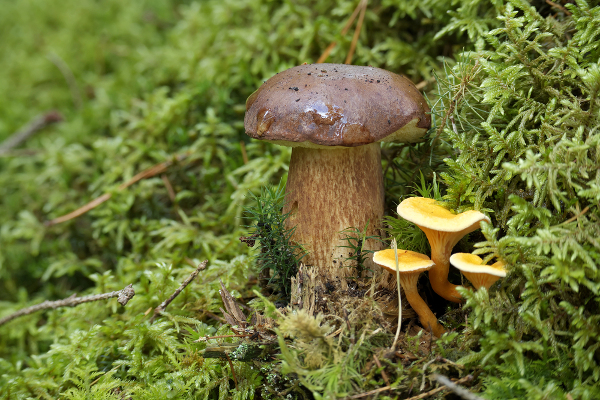
Boletus pinophilus, commonly known as the pine bolete, is a standout among edible boletes due to its unique characteristics and rich flavor. Typically found in coniferous forests, especially beneath pine trees, it forms a symbiotic relationship with their roots.
This mushroom features a robust, stout stem and a smooth, brown cap that can reach up to 15 cm in diameter. Its firm, white flesh has a subtle yellowish hue that deepens to a rich brown when cooked. Known for its nutty, earthy flavor, it enhances various dishes, from risottos to savory stews.
For foragers and culinary enthusiasts, Boletus pinophilus offers a delightful way to connect with nature while enjoying its culinary versatility. Proper identification is important, as some boletes can be toxic. With its distinct taste and texture, the pine bolete symbolizes the freedom found in exploring wild edibles, providing an enriching gastronomic experience rooted in nature’s bounty.
To enjoy the Pine Bolete, consider these three ideas:
- Sautéing: Slice the mushroom and sauté it with garlic and butter for a delightful side dish that pairs well with various entrees.
- Soups and Stews: Add diced Pine Boletes to your favorite soup or stew recipes for added depth and umami flavor.
- Risotto: Enhance a creamy risotto by incorporating chopped Pine Bolete, allowing its earthy essence to elevate the dish.
When foraging for Pine Boletes, ensure proper identification, as they can be confused with inedible species. This mushroom enriches culinary experiences while connecting us to nature’s bounty.
Red-Capped Bolete

The Red-Capped Bolete (Butyriboletus regius) captivates foragers and culinary enthusiasts alike with its vibrant red to reddish-orange cap. Typically found under conifers and broadleaf trees, this mushroom can grow up to 10 cm in diameter and features a smooth, slightly sticky surface when damp.
With firm, pale yellow flesh and a mild flavor, the Red-Capped Bolete enhances a variety of dishes. It can be sautéed, grilled, or dried for later use, making it a versatile choice for chefs and home cooks.
Beyond its culinary uses, the Red-Capped Bolete is a valuable source of nutrients, contributing to a balanced diet. Its ecological role includes forming mycorrhizal associations with various trees, promoting forest health. For those interested in foraging, this mushroom is a delightful and flavorful option.
Bay Bolete

Hailing from the forests of Europe and Asia, the Bay Bolete (Imleria badia) is known for its distinctive brown cap and vibrant yellow pores. This visually appealing mushroom is prized for its culinary versatility. The cap typically ranges from 5 to 15 centimeters in diameter, featuring a smooth texture that deepens in color with age.
The Bay Bolete thrives in various habitats, often found under birch and pine in association with both coniferous and deciduous trees. Its growth season spans from late summer to early autumn, presenting a prime opportunity for foragers. When harvested, the Bay Bolete offers a mild flavor profile with a slightly nutty undertone, making it an excellent addition to soups, stews, and risottos.
While the Bay Bolete is generally well-regarded, proper identification is essential, as some look-alikes exist. Its culinary appeal, combined with the thrill of foraging, captures the spirit many enthusiasts seek. Ultimately, the Bay Bolete stands out as a delightful choice for those exploring the rich world of edible mushrooms.
Bitter Bolete
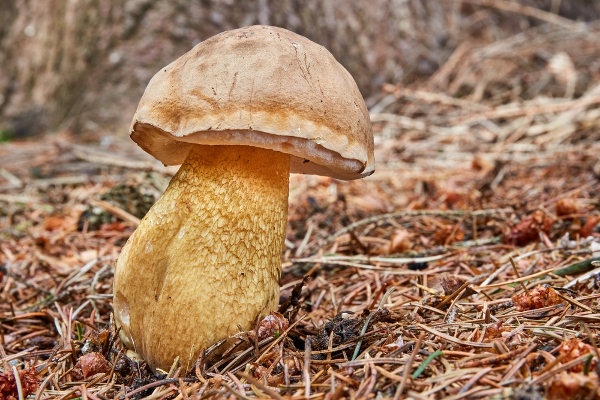
The Bitter Bolete (Imleria badia) poses a challenge for foragers due to its resemblance to more palatable mushrooms. Its acrid taste serves as a clear deterrent, but recognizing its characteristics can enhance your foraging experience.
Here are three key points to consider when encountering the Bitter Bolete:
- Identification: This mushroom has a brown cap with a slightly sticky texture, and its tubes are yellow to greenish-yellow, darkening with age. Familiarity with these traits can help prevent mix-ups.
- Habitat: Commonly found in coniferous forests, the Bitter Bolete thrives in acidic soils, often seen alongside spruce and pine trees during late summer to early autumn.
- Culinary Use: Although not edible raw, some adventurous chefs experiment with drying or cooking to reduce its bitterness. However, be cautious, as the flavor may not suit everyone.



